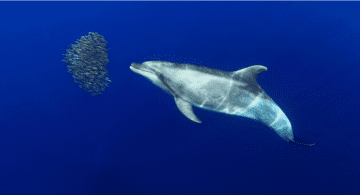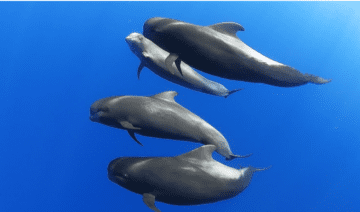Discovering the beauty of observing cetaceans in the Canary Islands can be a truly enriching experience, striking a balance between fulfilling the tourists’ desire and safeguarding the well-being of these marine mammals.

Few places in the world, let alone in Europe, rival the natural beauty of the Canary Islands. The archipelago is surrounded by stunning seawater that is home to at least twenty-eight different species of whales and dolphins. Some of these majestic creatures reside in the area, while others make a migratory stop-off. Understanding the oceanic habits of these animals is crucial, and the Canary archipelago provides a unique opportunity to regularly observe species like the short-finned pilot whale, the Atlantic spotted dolphin, or the Bryde’s whale. Few places globally allow the chance to witness up to nine different species in a single day, highlighting the exceptional geographical and oceanographic characteristics of the Canary Islands as the perfect habitat for a diverse range of cetaceans.
There are few sights in life as remarkable as witnessing the sudden swish of a cetacean breaking the surface. It’s understandable that spotting whales, dolphins, sperm whales, and other cetaceans has become a major tourist attraction, but this raises important questions about how to manage tourist demand responsibly.
A protected species
Cetaceans are safeguarded by regional, national, and European regulations, along with specific conventions ratified by the Spanish state, such as those signed in Bonn and Bern. Parts of the Canary Islands are designated as Special Conservation Zones (ZEC) under the Natura 2000 network. The Society for the Study of Cetaceans in the Canary Islands (SECAC) emphasizes the archipelago’s significance in the protection of cetaceans, serving as an ideal laboratory for research and conservation efforts on these marine mammals.
Dangers of boat saturation
Elsa Jiménez, director of the Cram Foundation, a private non-profit organization dedicated to marine environment protection, notes that the saturation of boats in areas inhabited by cetaceans can negatively impact their lives. Boat engine noise can impair communication and distort messages between the animals, while collisions pose a significant risk. Boat saturation has also been shown to cause stress in these magnificent creatures.

Blue Boat Badge
Recognizing the importance of responsible tourism, the blue boat badge scheme for cetacean trips has been extended. The yellow flag with the blue boat logo certifies that a particular boat complies with laws ensuring cetaceans a full and happy life. Tourists are prohibited from feeding or bathing with the animals, and boats must maintain a safe distance of sixty meters while approaching animals slowly. Guidelines also include minimizing engine revs and gear changes, avoiding sudden and repeated changes of direction, and limiting interaction with the animals to no longer than half an hour. Tourists are urged to maintain silence when near cetaceans, and in case of a buildup of boats, vessels should disperse.
Cetacean well-being
Elsa Jiménez emphasizes the importance of being careful rather than imposing prohibitions, recognizing that this tourist activity has the potential to educate and raise awareness. Scientists play a vital role as advisors, utilizing their knowledge to protect the well-being of cetaceans. Jiménez notes that cetacean population numbers are stable, thanks to a good understanding of the areas they traverse, their routines, and behaviors.
Respect the environment
In essence, says Jiménez, it’s about respecting the environment in which cetaceans live. This involves following guidelines established by the blue boat seal, but visitors must also consider their own behavior. It’s crucial to ensure that no rubbish is thrown into the beautiful waters around the Canary Islands. With effective regulation and responsible visitors, cetacean watching in the waters around the Canary Islands can be enjoyed for many years to come.
